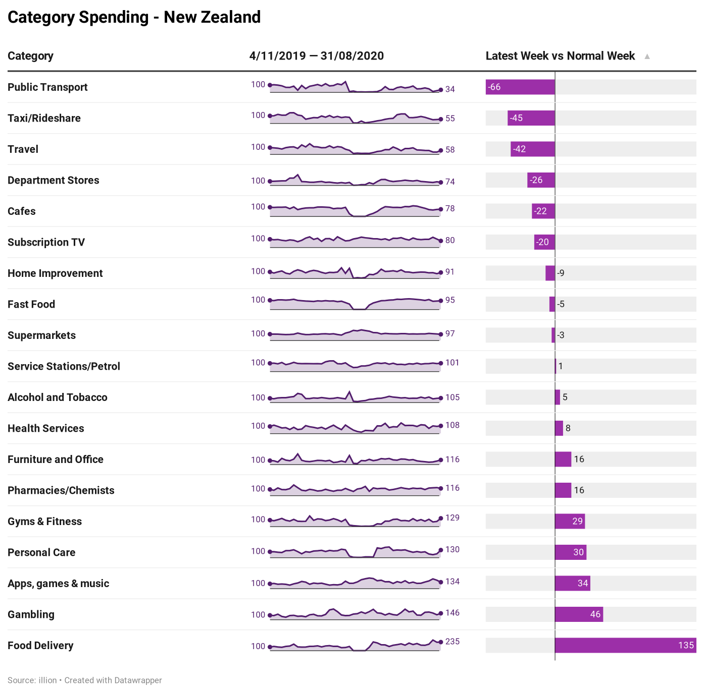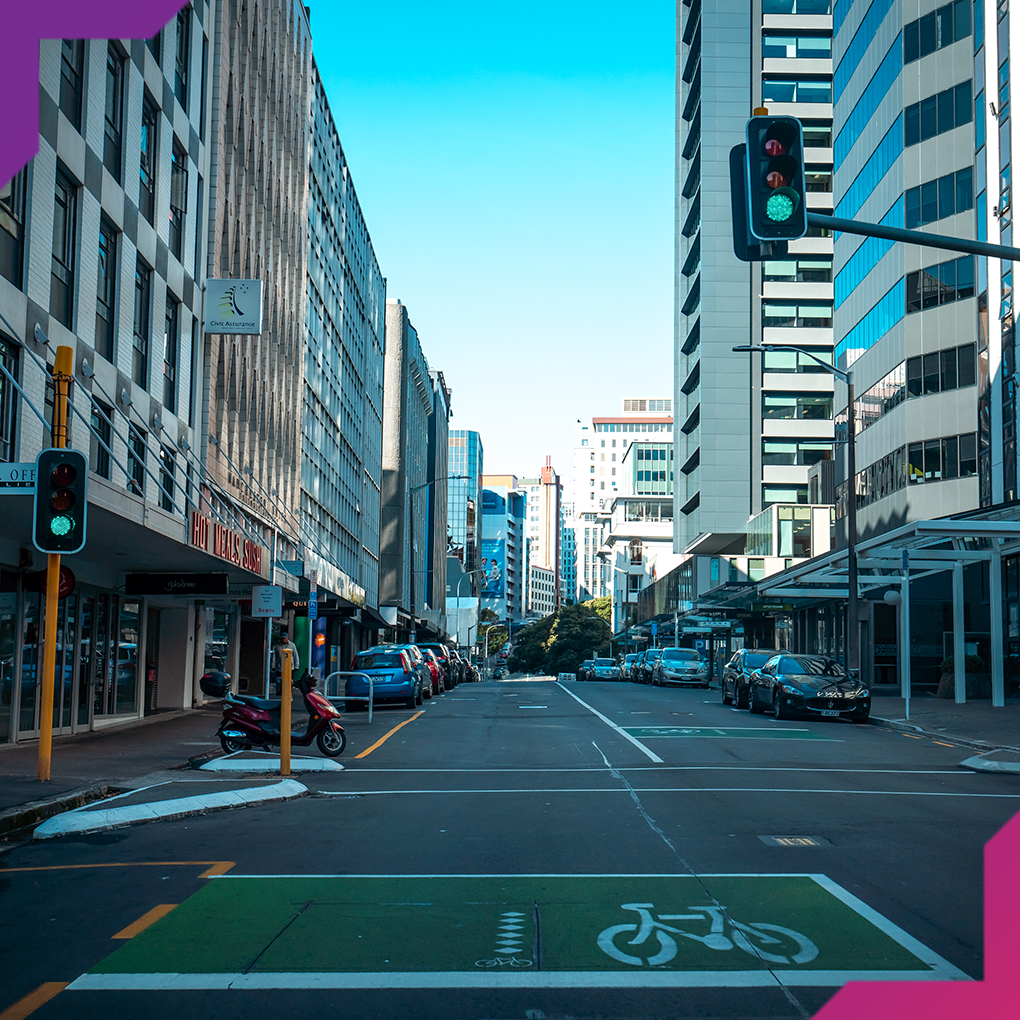Drawing on anonymous real data from the actual banking transactions of about 9,000 Kiwis, we can disclose for the first time the detailed spending habits of New Zealanders in March as they prepared for the nationwide lockdown.
So too, we can show how those spending habits changed during the lockdown itself in April and how they altered again when the Stage 2 restrictions were reimposed in August as a result of the Auckland cluster.
Overall the themes that have emerged are that Kiwis have dispensed with modesty, with spending on personal care and fitness down while we remained anonymous at home, and spending on home offices and home renovations rose.
Stage 1 – before lockdown in late March
● In the initial pre-lockdown period in late March, New Zealanders went on a stock-piling binge, with spending on home offices up by a staggering 128% compared to pre-COVID spending in November, to ensure people could continue working efficiently remotely.
● So too, spending on DIY home improvements rocketed up by 54% as Kiwis prepared to use their enforced home time wisely on projects that had been put off in the past.
● In contrast, we prepared for the anonymity that lockdown provided by reducing our spending on personal grooming by 74%.
● Even though nationwide lockdown restrictions had not yet started, it appears as though Kiwis were taking their safety seriously, as they reduced their spending at cafes by 72% and face to face retail transactions by 40%.
Stage 2 – April nationwide lockdown
● When the Stage 4 lockdown period was imposed in April, Kiwis ‘cocooned’ themselves in their homes, with spending on gyms and fitness down by 92%, personal care down by 94%, café spending reduced by 97%, and restaurant and fast food spending down by a staggering 99%.
● So too, we embraced the ‘Covid track-suit uniform’, with spending on fashion and leisure retail down by 72% as human interactions were all but eliminated.
● In contrast, spending on online shopping rose by 59% and subscription TV expenditure jumped by 14%, confirming we became a nation of couch potatoes during the April lockdown period.
● Perhaps in a sign of frustration, gambling during this period also rose by 47%.
Stage 3 – August selective Auckland cluster lockdown
● The big change here appears to be that Kiwis were beginning to tire from the constant home cooking and home maintenance that occurred in the initial lockdown period.
● As a result, home improvement spending fell back by 9%, while home food deliveries rose 50% and online shopping jumped by 43%.
● One interesting point to emerge is that wealth is having an enormous impact on how much New Zealanders spend on non-essential items.
● For example, wealthier individuals tightened their belts more than others, with discretionary spending dropping to 80% of pre-crisis levels.
● In comparison, discretionary spending within middle incomes has been largely stable after a decline of about 70% during the April lockdown.
● Lastly, lower-income individuals have come out of lockdown strongly, with elevated levels of government support driving a consistent 20% increase in discretionary spending.

What all this tells us is that Kiwis have changed their spending habits significantly through COVID. For example, the move away from face to face retail spending, in favour of online alternatives, suggests COVID has accelerated trends that were evident for some years.
The question will be whether any of the other anomalies are temporary or permanent changes to New Zealanders’ lifestyles.
Upcoming Webinar
For more information on what we are seeing in the New Zealand economy, join our next webinar on Wednesday 30 September at 2PM.
Want to learn more?
Fill in this form to talk to our friendly team today.

